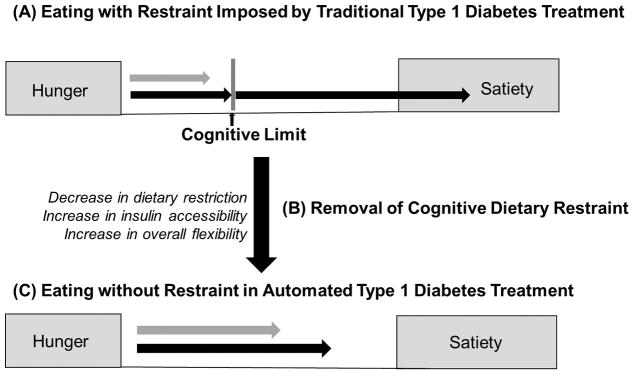FIGURE 2.
(a) Traditional Type 1 diabetes treatment: At diagnosis with Type 1 diabetes, there is transition into a state of cognitive dietary restraint that is compounded by introduction of nutritional guidelines, carbohydrate counting, eating in the absence of hunger, intense self-regulation, and dietary restraint. (b) Transition to be navigated with introduction of closed-loop systems: the flexibility lent by the closed-loop system will remove rigid eating patterns and lift the boundary of cognitive dietary restraint. We suggest this transition be leveraged as an opportunity to teach persons lifelong eating behaviour to promote healthy weight status by incorporating education and cognitive reappraisal. (c) In the absence of cognitive dietary restraint, eating behaviour should resemble non-restrained eaters, including increased flexibility, intuitive eating, and restored hunger and satiety signalling.

